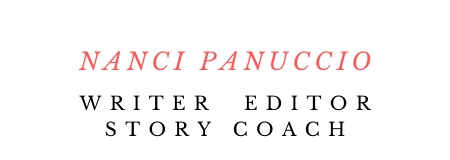A common challenge many writers face is gaining clarity on the story they’re writing, and then conveying it to readers in a way that compels them to keep reading.
With many stories, there are often too many story-lines that don’t feel integrated. And too many characters whose relevance isn’t clear. And then there are random events that don’t have a clear connection to one another.
The story meanders without a point
It makes the story hard to follow. Because there’s a lot of noise.
And the reader isn’t sure what to focus on. Or what’s important to notice and pay attention to.
The challenge is to nail down who your story’s about, what problem your character is trying to solve, what incident catapults him or her into action, and how he or she goes about solving their story problem.
It’s a pretty straightforward framework. And there are 5 parts to it, which we’ll break down in today’s episode.
So, if you’re having trouble writing your story, if you’re getting stalled in the middle, if you’re feeling overwhelmed and lost in your own material, this episode is for you.
Download as an MP3 by right-clicking here and choosing “save as.”
Episode at a glance:
[02:28] Nearly every story you watch or read boils down to this:
A character wants something and encounters a problem before he/she can get it.
So, we have a character, and a goal. They’ll have some kind of plan that moves them through the story. That plan will likely shift as they encounter mounting obstacles. And at the end, they’ll either succeed in getting what they want or fail.
It’s a simple framework broken down into 5 parts.
[03:32] 1. Character
Your story may have many characters, and even multiple points of view, but there will be one main character we’ll follow all the way to the end. This is the character we’ll identify the most with (although we’ll most certainly identify with your other characters as well.) But this character’s journey is the one we’ll be most invested in.
Learn how to articulate your character’s core desire in both in concrete terms and and their more elusive urge for survival.
[08:34] 2. The Problem
The problem is your story’s hook. Unless you identify it, the reader will quickly lose interest. Learn the relationship between your story’s external problem and your character’s internal problem and why you need both.
[12:18] 3. Call to Action
There will be some call to action early in your story when your character is catapulted out of his comfort zone and into the fray. Something happens beyond his control. It’s unavoidable, and your character is then forced to take action. You’ve heard this as the inciting incident, or significant situation that sets your story in motion. Here’s the thing. Characters never take action out of their own volition. They need to be challenged to take action by outside forces that are beyond their control.
[14:52] 4. Rising Stakes
What will happen if your character gets or doesn’t get what they want? That’s where all the narrative suspense lies. So you want to foreshadow both possibilities for the reader.
[17:13] 5. Resolution
This is what your reader stays for. Did this person succeed or fail? It’s either going to be a yes or a no.
However, failure or success on its own not enough to resolve a story.
Learn how your character’s internal journey leads to personal transformation.
Rate, Review, and Follow on Apple Podcasts.
“I love Writer Unleashed!” If that sounds like you, please consider rating and reviewing my show. This helps me support more writers — just like you —to bring the story burning in their imagination onto the page. Click here, scroll to the bottom, tap to rate with five stars, and select “Write a Review.” Then be sure to let me know what you loved most about the episode!
Also, if you haven’t done so already, follow the podcast. It’s chock full of writing tips and inspiration every Tuesday. Follow now!

